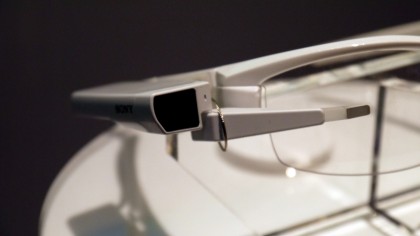What wearables need to do to make me click 'buy'
Smartwatches, fitness trackers and AR have a long way to go

Wearable technology exists to satisfy strange curiosities. We're not talking "anime body pillow" levels, but more to the extent that it's a little odd to want to a camera mounted to your eyeglasses. Wearables aim to fill technological voids where voids don't exist, by putting computers into watches and vibration motors into bangles and earrings. There's no doubt retrofitting these "dumb" gadgets with cutting-edge improvements adds new dimensions of functionality and fashion, but is any of it necessary?
Necessity may be the mother of invention, but wearables somehow exist without it. By veering from this traditional development path, many weird proofs-of-concept have rushed to market. But once smart companies begin to get behind the idea, will wearables have their chance to find solid ground?

Even if they do stick the landing, I'm still not sure that I can be convinced to buy in. That's not to say I haven't been tempted by a few wearables. My colleagues have caught me in a cold sweat before, hovering over the "buy" button for a Pebble smartwatch several times. I've somehow yet to buckle.
As someone who absolutely loves tech, I want to love wearables. But there are still a few pesky things that make resisting them all too easy.
A shot in the dark
Wearables are misguided at the moment. After all, the most alluring hook going for them isn't utility - their biggest selling point - but instead stunning design. Taking a few hints from skilled crafters of watches, fine jewelry and eyeglasses - and in the case of the Misfit Swarovski Shine, partnering with them - tech companies are pumping out some seriously attractive products.

Just rattling off a few examples, the LG Watch Urbane, Apple Watch and Google Glass are each delectably crafted and fashionable. And their efforts to break into the fashion-savvy world haven't gone unnoticed. I too enjoy stellar design as much as the next person, but it doesn't distract me from seeing these wearables for what they are: technologies that have come to market bass ackwards. Maybe I'm just strange, but I require function before form and too few wearables have just that.
Convenience confused for innovation
Wearables aim to ease modern struggles by minimizing the effort and time gap that exists between you and your information. As superficial as that seems on paper, it's easy to get sucked into the idea that wearables will make your life easier. To an extent, some of them do. A product that simplifies a pesky sequence of movements is convenient, but that doesn't necessarily make it innovative.
Sign up for breaking news, reviews, opinion, top tech deals, and more.
Smartwatches like the Moto 360 and the upcoming Apple Watch each claim to bring new functionality to the table that smartphones aren't capable of providing. Aside from biometric readings, smartwatches primarily act as a vessel to push smartphone notifications straight to your wrist, eliminating the need to fish your phone out of your pocket.

Other devices like the Sony SmartEyeglass Attach look to streamline that process even further by abandoning the wrist and moving straight to your face, pushing the info straight to your eyes by integrating a camera and screen into an ordinary-looking set of glasses. The camera nixes the need to yank your phone out to snap a pic and the screen discretely displays notifications.
On a more fashionable note, Kovert Designs makes smart jewelry called Altruis. The concept of putting micro-electronics like a vibration motor inside of a gold necklace is novel, but ultimately each piece of jewelry costs more than $400 and does nothing beyond notify you of alerts on your phone.
Convenience alone is enough to sell some, but I can't be bothered to invest in these expensive devices that only shave just a couple seconds away from the process of checking my phone for notifications or taking photos.
The mad dash to find success
No wearables display a mastery of balancing function and fashion, but a few show promise. So few, that the first company to strike gold with that perfect brew may leave the competition very far behind.

However, until then, the scramble of experimentation will continue. And while I think that only good can come out of this painful but necessary iterative trial period in the evolution of wearables, it's just another reason I talk myself down from investing in wearables in the first place.
Am I suggesting that we should all stop buying wearables? Of course not. It's one of the sectors in technology that I'm most excited about for the future because it is uniquely positioned to help keep us healthy and entertained in fun, new ways. But in its current form, it needs work before I hit the "buy" button.

Cameron is a writer at The Verge, focused on reviews, deals coverage, and news. He wrote for magazines and websites such as The Verge, TechRadar, Practical Photoshop, Polygon, Eater and Al Bawaba.